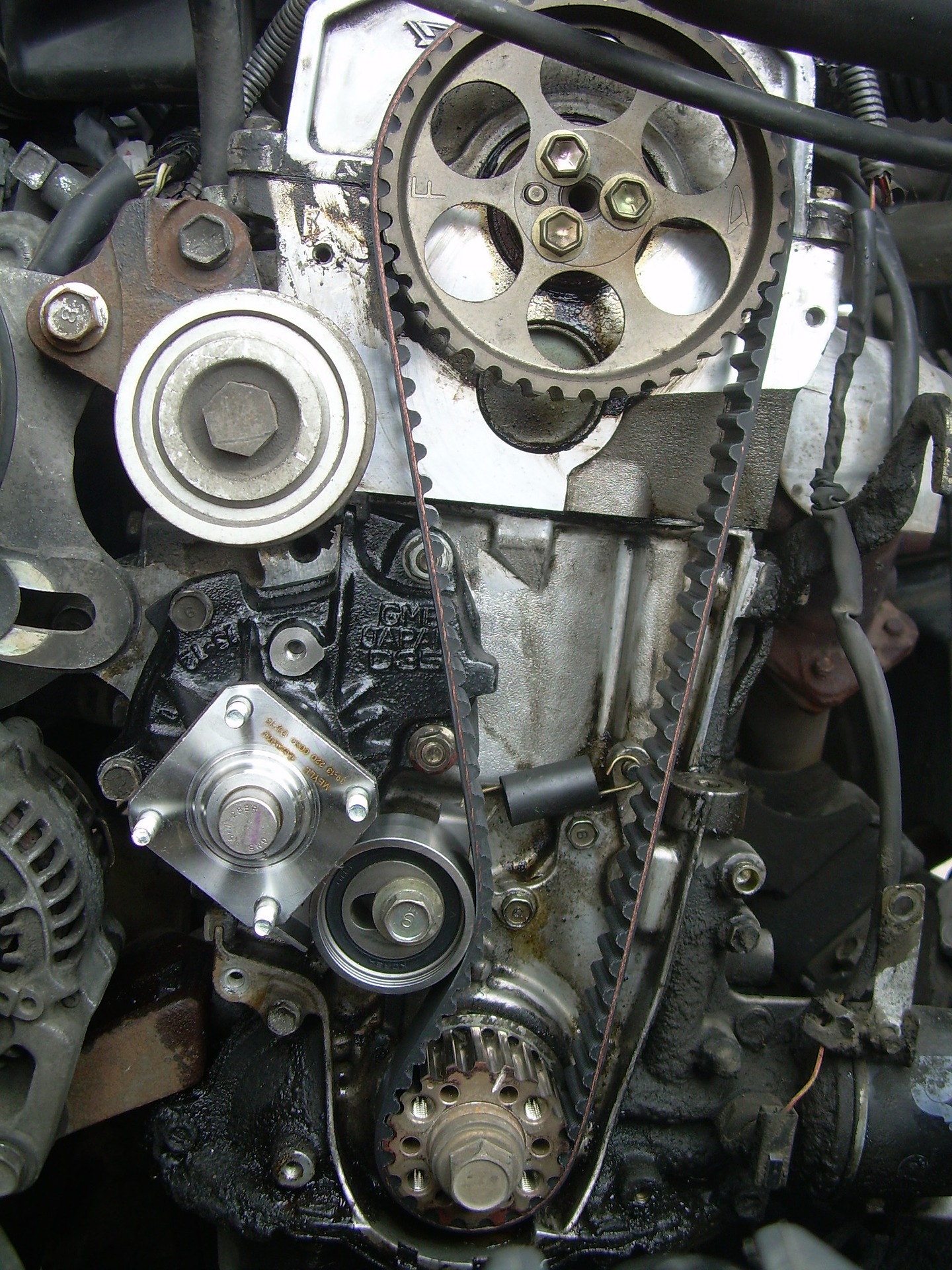
The internal combustion engine is a magnificent structure that powers a car. It is a very complex mechanical system full of moving parts that involuntarily wear out. One of them is the timing gear, and the time of its replacement we can not ignore.
To understand why a functioning valve train is so important for our engine, we need to understand its function. It is the mechanism that coordinates the crankshaft with the camshafts.
Initially it was a set of sprockets, but in the course of time solutions were developed with a higher work culture – firstly the timing chain was introduced, and in current engines you will most often meet a rubber toothed belt reinforced with glass fibre.
The valve train ensures proper synchronization between pistons and valves. It ensures that the fuel mixture reaches the cylinder at the right moment and that the exhaust gases escape. Disturbance of the ideal harmony of the cycle can lead to collision between pistons and valves, and this phenomenon has disastrous consequences, leading to cracking of pistons or the entire head or engine block. If we want to avoid such a scenario, we must bear in mind the need to control the condition of the valve train and its regular replacement.
The car manual should be our best friend. There is nothing embarrassing in looking into it frequently, on the contrary, it shows that we care about our vehicle. If we have a new car, in the periodic inspection table you will find precise information about when the workshop visit will only check the timing, and at what point it will be absolutely necessary to replace.
In the case of engines with rubber belts, the rule of thumb is a service life of about 100,000 kilometers – plus or minus 20,000. Regardless of the mileage, the belt should be replaced every six years. Note, however, that these are recommendations for operating the car in dust-free areas
However, if you drive mainly on unpaved roads or, on the contrary, use the car almost exclusively in the thick of urban pollution, both these figures should be halved. Do the same if you drive in cold climates or leave the engine in neutral for long periods.
Don’t be surprised – if dirt particles get into the valve train, it won’t run completely smoothly and will start to wear out faster. Similarly, large temperature differences lead to rubber evaporation, and idling introduces unwanted vibrations into the system.
First of all, we need access to the mechanism. Since this is a service job, manufacturers usually won’t over-complicate it, but in some cases we may need to remove the engine or disassemble a large part of the car.
Once we get over this hurdle, we need to immobilize the mechanism, preferably with dedicated tools, so that the crankshaft and camshafts do not change position relative to each other. Then we can proceed to remove the old belt and install a new one in its place, remembering about its proper tension. If we do not take care of this, the belt may slip, and this will lead to desynchronization of the system.
The belt itself is the cost within the limits of 500 zł, in turn, all the tools needed to change it yourself can easily buy or rent. However, if you have no experience in this type of work or simply do not feel up to it, it is best to outsource it to a workshop.
Most garages treat timing replacement as a one-day job. This means that at best we’ll get our car back after a few hours, and at worst the next day. Of course, the better the reputation of the workshop, the more confident we can be about the declared dates
A professional garage will also handle better than us if any unexpected problem arises. The best professionals charge high fees for labor, but they also give a guarantee for their repairs, and we can not count on such in any case if we start turning the keys in our own garage.
(Photo: pixabay.com)